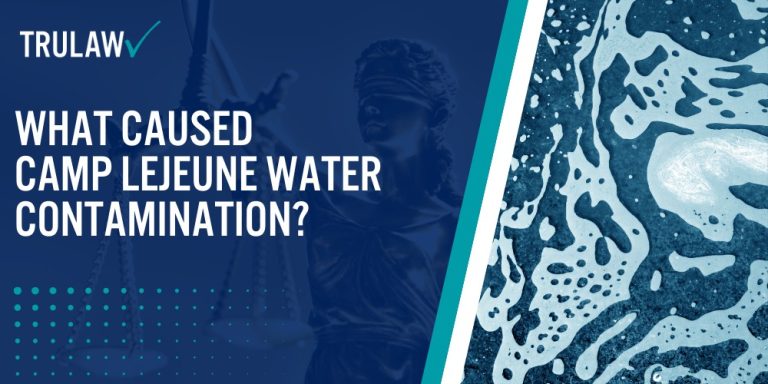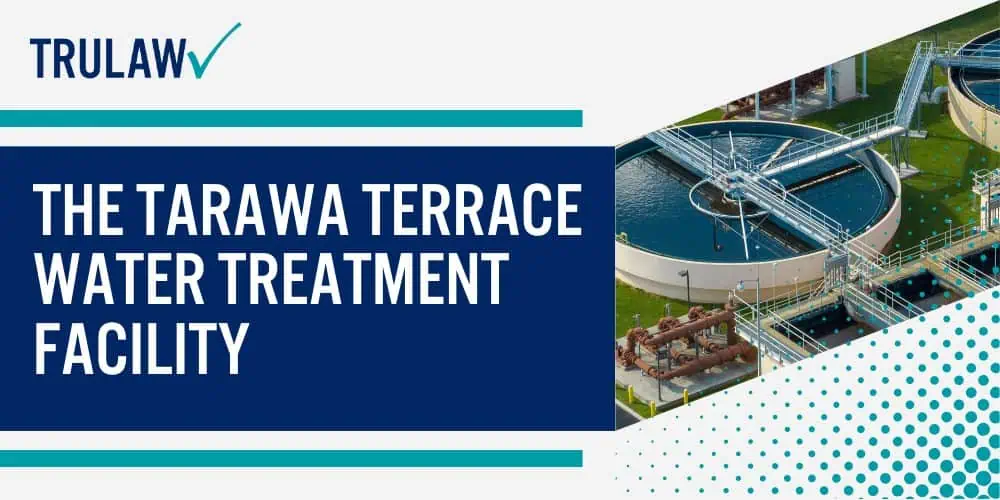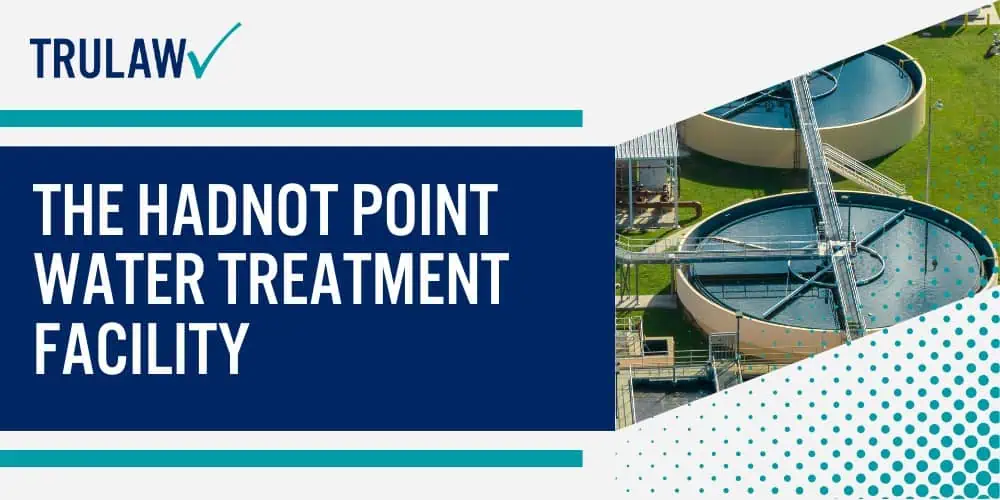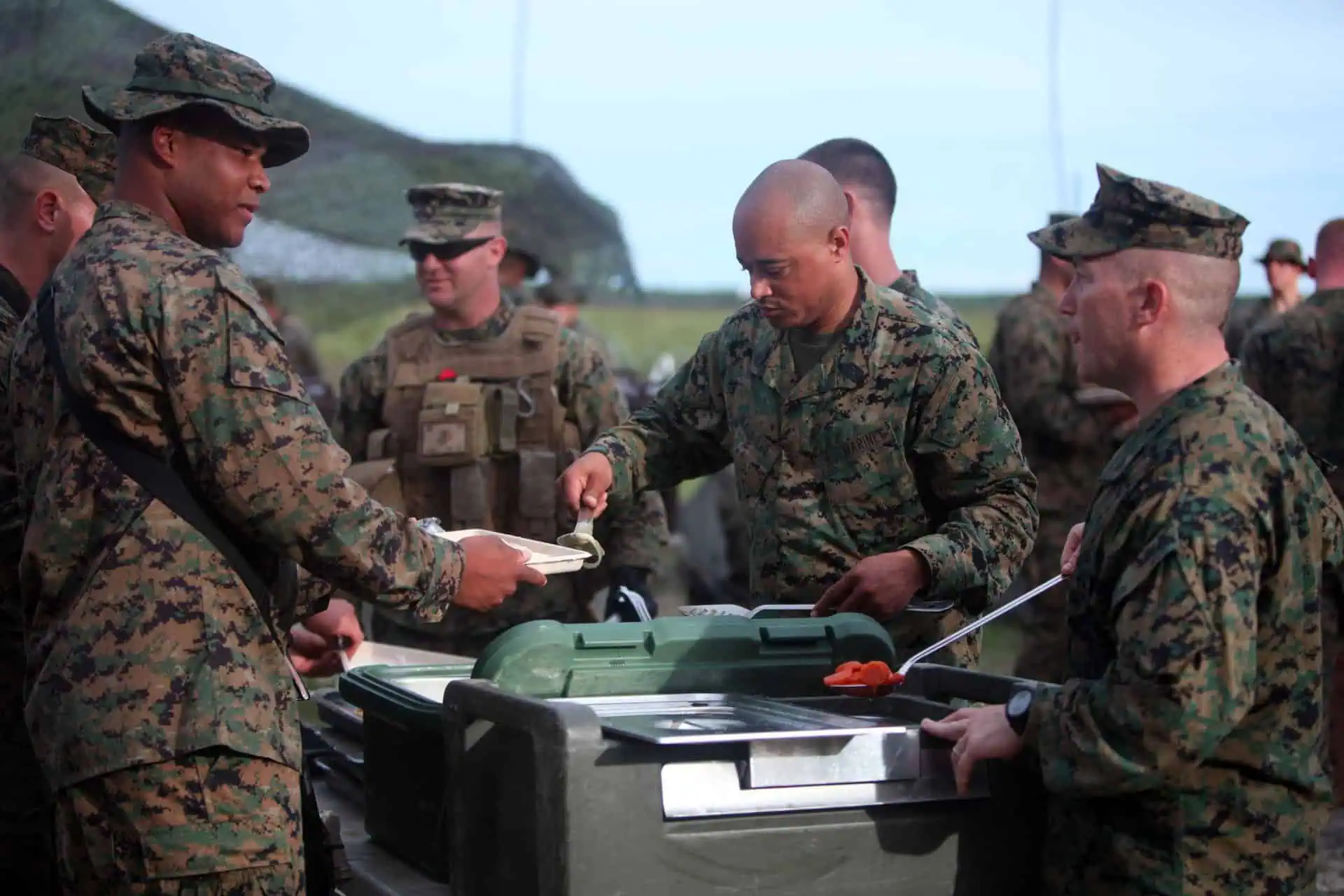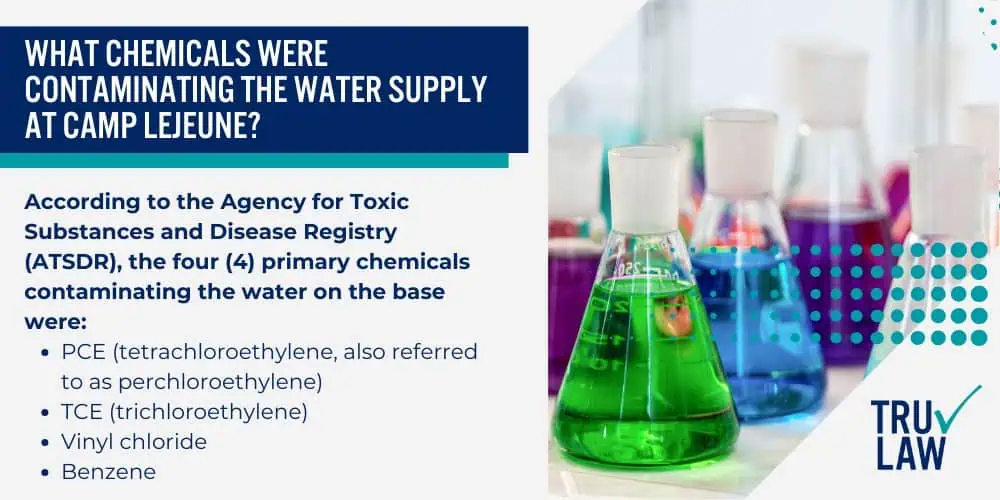
According to the Agency for Toxic Substances and Disease Registry (ATSDR), the four (4) primary chemicals contaminating the water on the base were:
- PCE (tetrachloroethylene, also referred to as perchloroethylene)
- TCE (trichloroethylene)
- Vinyl chloride; and
- Benzene.
All four (4) of the chemicals are colorless and invisible to the naked eye.
PCE is commonly used as a dry-cleaning agent, though as the ATSDR notes, it has been used for metal degreasing as well.
PCE can either rapidly evaporate from shallow soil, or it can slowly degrade in the soil over time and eventually contaminate groundwater.
TCE is a solvent and is frequently used for cleaning metal parts.
Like PCE, it is a volatile organic compound (VOC) that has a sweet odor and is nonflammable.
Over time, TCE and PCE can break down in soil and form vinyl chloride, which can pollute groundwater.
Vinyl chloride is colorless and can dissolve in water.
In industrial settings, it has numerous uses, including making PVC pipes and manufacturing certain plastic products.
Benzene has been used for a wide variety of purposes, including manufacturing resins, rubber lubricants, synthetic fibers, plastics, dyes, sunscreen, pesticides, and drugs.
Like the other chemicals, it is colorless, has a sweet aroma, and can dissolve in water.
The water contamination at Camp Lejeune primarily occurred at two water treatment plants:
- Tarawa Terrace; and
- Hadnot Point.
